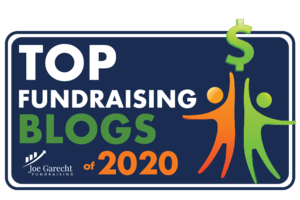That’s right. “Planned Giving” is bad for nonprofit fundraising.
For years, I’ve been writing and talking about the problems with the term “Planned Giving.” Now, new research underscores what I’ve been advising: You should stop using the term!
Sometime ago, The Stelter Company conducted a survey that I cite in my book, Donor-Centered Planned Gift Marketing. Stelter found only 37 percent of Americans over the age of 30 have a familiarity with the term “Planned Giving.” We have no way of knowing what percentage of those claiming familiarity really, in fact, know what the term truly means.
Other terms have become increasingly popular as substitutes for “Planned Giving.” However, none has yet to gain sufficient traction to overtake the use of “Planned Giving.” Consider the results from simple Google searches I conducted for this post:
- Planned Giving — 14.8 million results
- Philanthropic Planning — 11.1 million results
- Gift Planning — 5.7 million results
- Legacy Giving — 2.1 million results
What we know is that the general public has little understanding of the term “Planned Giving” although it appears to be the best term we have. Unfortunately, popular does not mean effective.
 While “Planned Giving” is a reasonable, inside-the-development-office catch-all term to describe, well, planned giving, it’s not a particularly good marketing term. That’s according to the findings of philanthropy researcher Russell James, JD, PhD, CFP.
While “Planned Giving” is a reasonable, inside-the-development-office catch-all term to describe, well, planned giving, it’s not a particularly good marketing term. That’s according to the findings of philanthropy researcher Russell James, JD, PhD, CFP.
James conducted a study to answer this vitally important marketing question: “What is the best ‘front door’ phrase to make people want to read more Planned Giving information?”
Think of it this way: Will a “Planned Giving” button at your website encourage visitors to click through to learn more or is there a more effective term?
To be a successful term, James believes two objectives must be met:
- Individuals have to be interested in finding out more.
- Individuals have to expect to see Planned Giving information (i.e., no “bait and switch”).
To find the strongest marketing term, James asked people to imagine they were viewing the website of a charity representing a cause that is important in their lives. In addition to a “Donate Now” button, the following buttons appear on the website:
- Gift Planning
- Planned Giving
- Giving Now & Later
- Other Ways to Give
- Other Ways to Give Smarter
- Other Ways to Give Cheaper, Easier, and Smarter
James asked participants to rate their level of interest in clicking on the button to read the corresponding information. In a follow-up, James asked study participants what kind of information they would expect to see when clicking the buttons mentioned above.
The winning term is:
Other Ways to Give Smarter.”
This term generated the second greatest level of interest and the second highest understanding of what to expect when clicking through. The terms that rated higher had a great disconnect between interest and expectation thereby making them poor choices.
By the way, “Planned Giving” only attracted the interest of four percent of study participants while “Gift Planning” came in at just three percent!
When marketing, we will generate stronger fundraising results by replacing “Planned Giving” with a more effective term. James research points us in the right direction.
Last month, James presented the findings of this study, along with his other recent research findings, in the webinar Words that Work II: The Phrases that Encourage Planned Giving. The program was hosted by MarketSmart.
If you missed the webinar, I have some great news for you. You can download a free recording of James’ presentation by clicking here.
You can also read what James’ research says about bequest giving by reading my post “Avoid a Big Mistake: Stop Asking for Bequest Gifts!”
I want to also mention that James continues to research the words that will allow us to be most effective. What alternative words or phrases to “Planned Giving” would you like James to test in future studies? What words or phrases have you used that you believe have been effective?
That’s what Michael Rosen says… What do you say?








